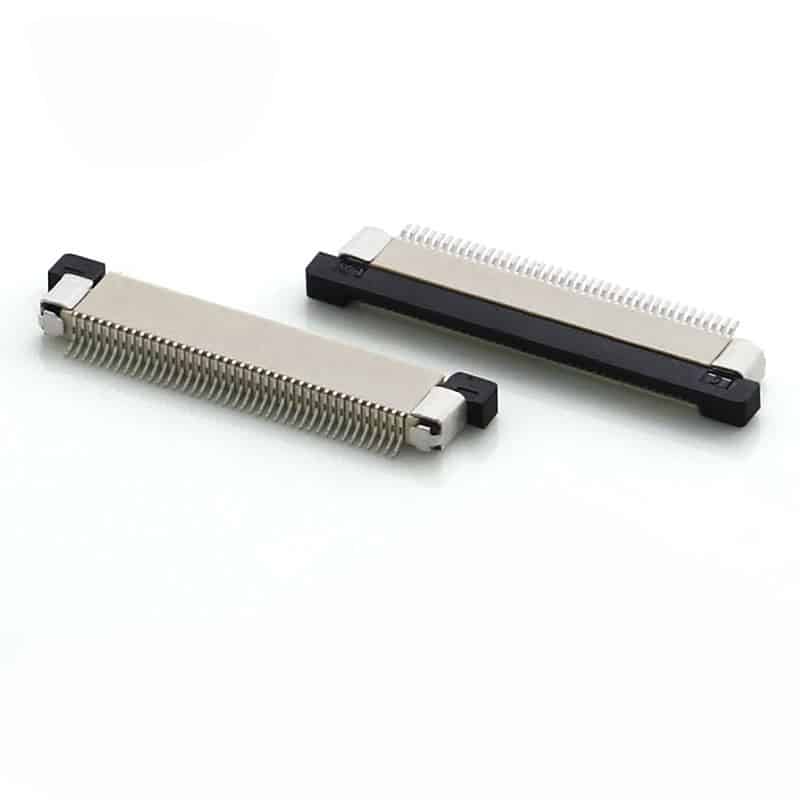Des: 1mm Pitch FPC Connector top contact drawing ZIF horizontal smt right angle H=2.5
Part No: FPC-1025DU-nP
Specification:
Pitch: 1.0mm
Rate: 0.5A, 50V DC/AC
Pusher type: Drawer, Zif
Packaging: Pcs/Reel

Des: 1mm Pitch FPC Connector top contact drawing ZIF horizontal smt right angle H=2.5
Part No: FPC-1025DU-nP
Specification:
Pitch: 1.0mm
Rate: 0.5A, 50V DC/AC
Pusher type: Drawer, Zif
Packaging: Pcs/Reel
A Tactile Switches is a momentary-contact electronic component that rapidly closes or opens a circuit when minimal operating force (typically 1-5N) is applied. Upon pressure release, its internal metal dome automatically resets to break the connection13. Core characteristics include: Key Structural Components: plaintextCopy CodeTerminal Pins → Electrical contacts Base → Structural support Metal Dome → Conductive element (copper/silver alloy) Button → Transmits external force Cover → Dust/contaminant shield The comparison between tactile switches and push button switches, maintaining technical accuracy and structural clarity: I. Core Operational Principles II. Structural & Performance Comparison
The basic performance of electronic connector can be divided into three major categories: mechanical performance, electrical performance and environmental performance. 1. Mechanical properties In terms of connection function, plugging and unplugging force is an important mechanical property. Plug-in force is divided into insertion force and extraction force, and the requirements for the two are different. There are regulations on the maximum insertion force and the minimum separation force in relevant standards, which shows that the insertion force should be small, and if the separation force is too small, it will
The Type-C USB4.0 connector is a high-performance, universal connectivity standard based on the USB-C physical interface and the USB4 protocol, designed to unify the interface for data transmission, video output, and power delivery, while dramatically improving speed and functionality. Here’s a full breakdown of its technical details and core features: Physical structure design 1. USB-C interface features ◦ Reversible plugging: 24 symmetrical design, supporting forward and reverse bidirectional insertion, completely solving the orientation problem of traditional USB-A/Micro-USB. ◦ 24-pin layout: ▪ High-speed data lanes: 4 pairs of differential signal pairs
Are you looking for a reliable electronic connector manufacturer to support your business with high-quality products at competitive pricing?